Not Just Dirt: Mark Van Wagner Turns Earth into Art: A Interview with the Artist and Difranco
Mark Van Wagner is a contemporary artist whose practice fuses natural materials like sand and pigment with conceptual rigor, creating textured, tactile compositions that feel both primal and deliberate.
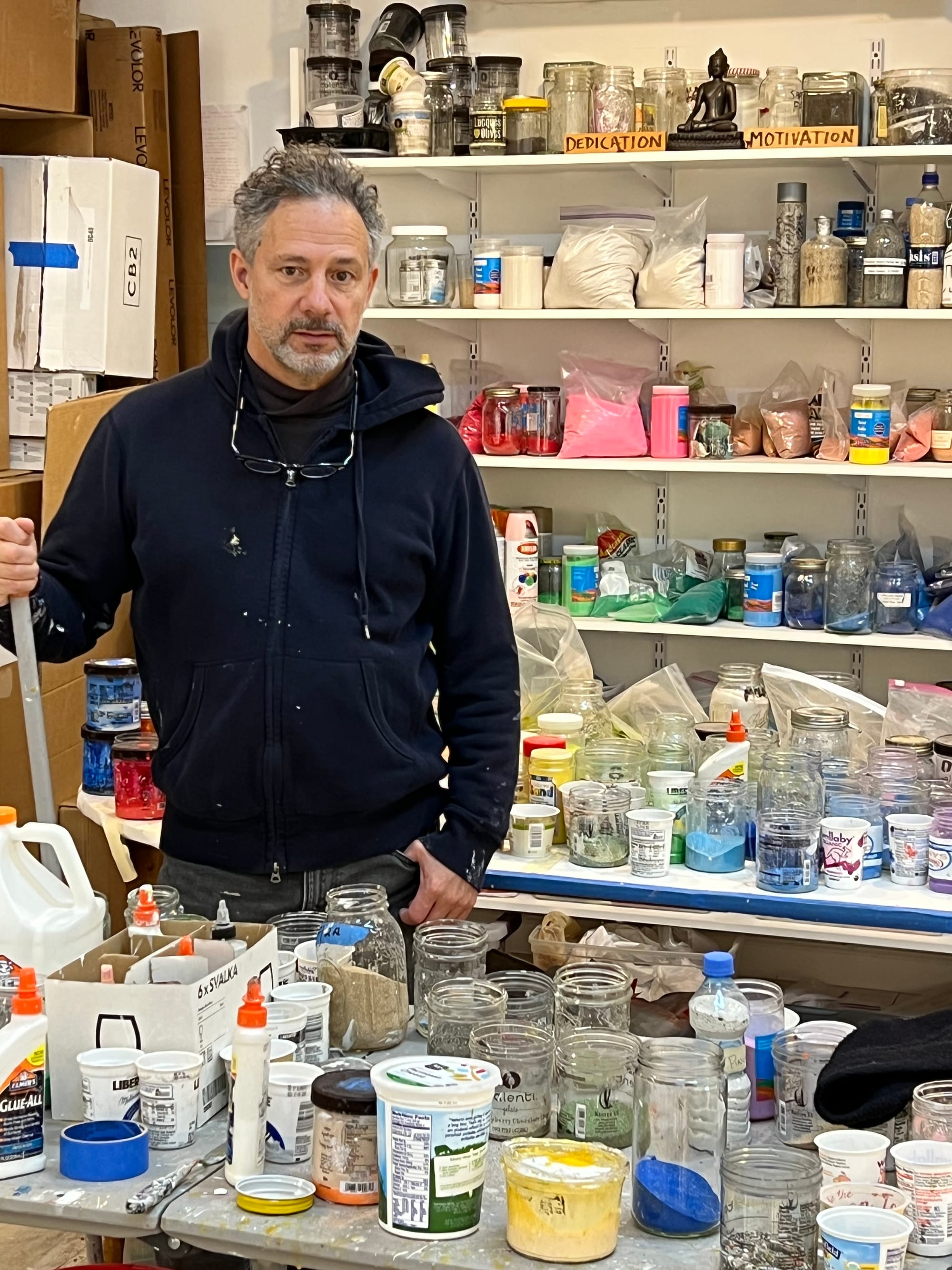
His work oscillates between abstraction and geological mapping, invoking the slow time of landscapes and the immediacy of gesture.
Recently exhibited at Spark Art Fair Vienna 2025, with Marquee Projects ,Van Wagner’s pieces stood out for their grounded physicality and meditative density.
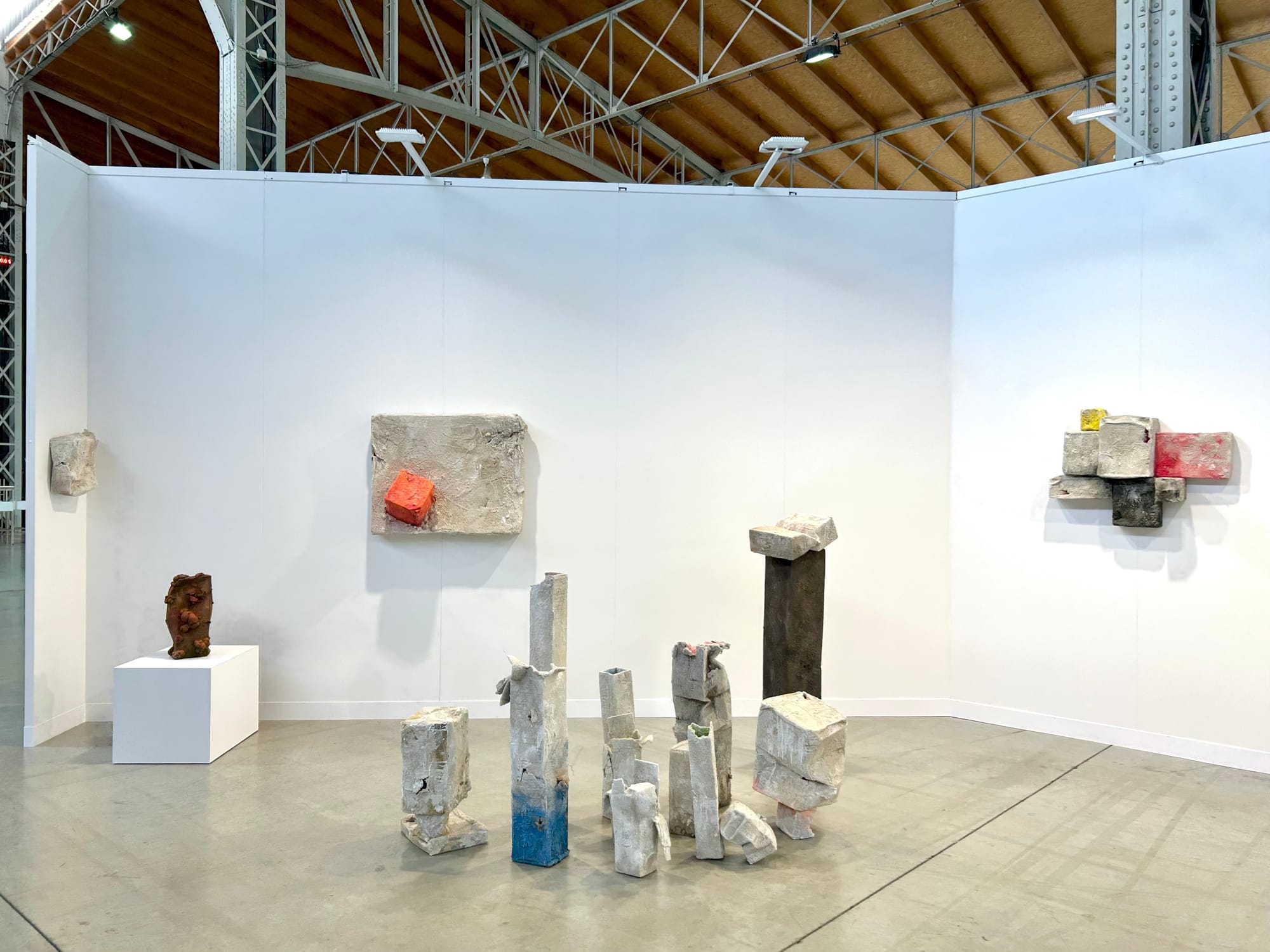
Alongside group shows in New York and Berlin, his Interview with DiFranco adds a compelling dialogic layer to his evolving practice—one that blurs the line between painting and artifact, surface and sediment.
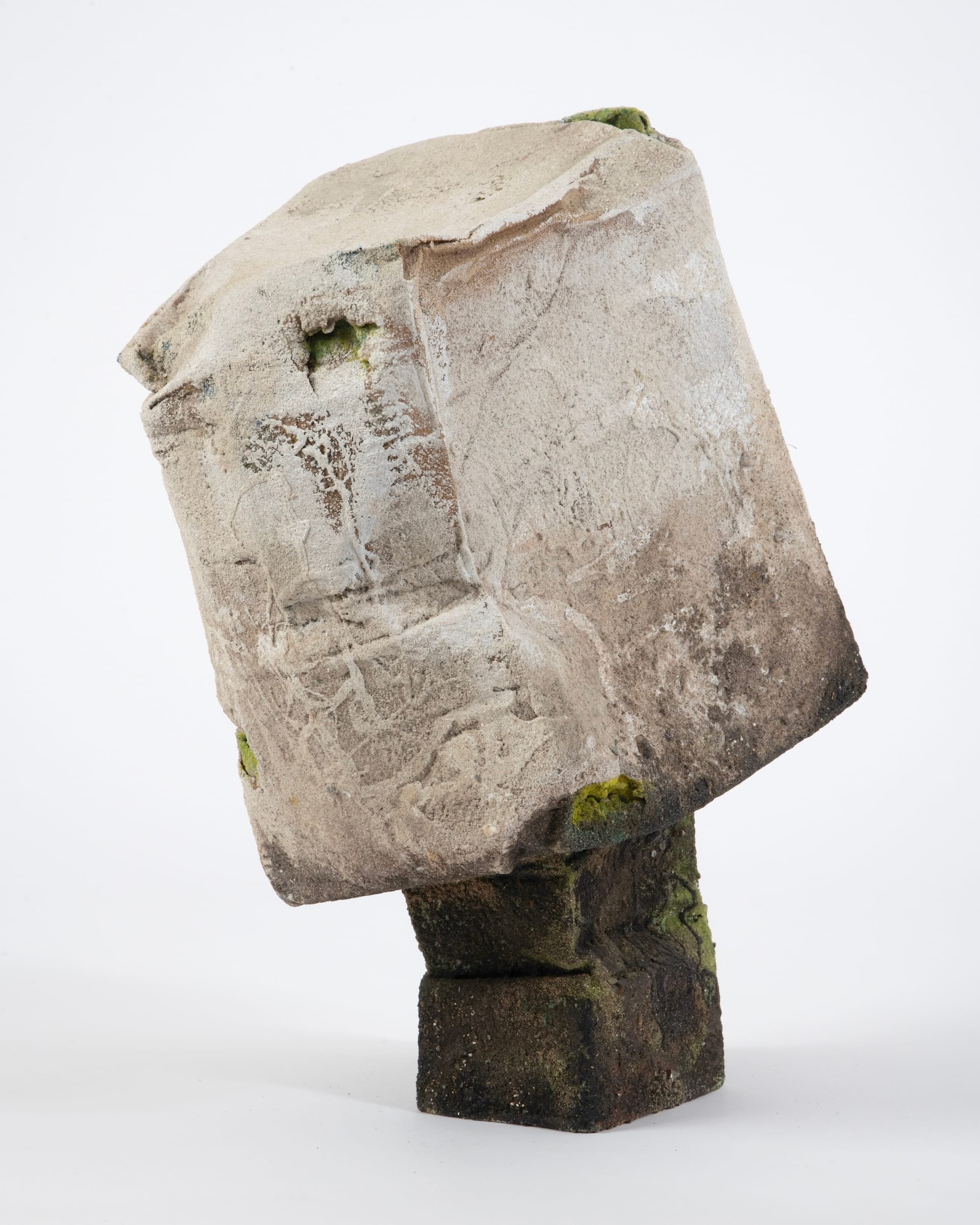
Interview with Mark van Wagner and Difranco:
1. What first drew you to incorporating sand into your artwork?
I considered what natural element would capture and define the most literal essence of material decomposition. Sand was the answer.
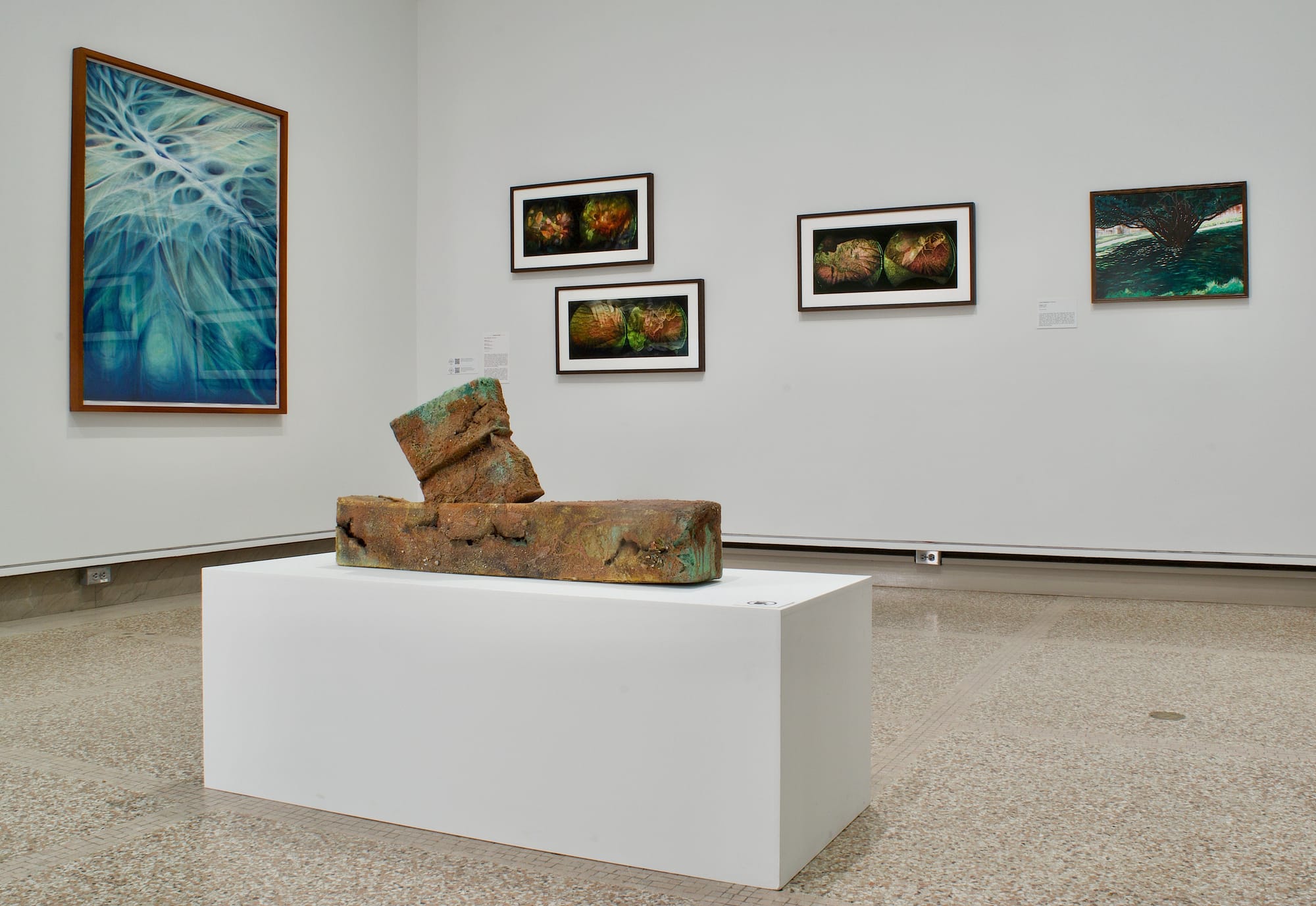
2. Your art often includes recycled materials and found objects. How do these elements contribute to the themes you explore?
Boxes, sand and debris are easily available. They are simple, uncomplicated materials. When making the work, one of the things I like to remind myself of is how the creative process all began.
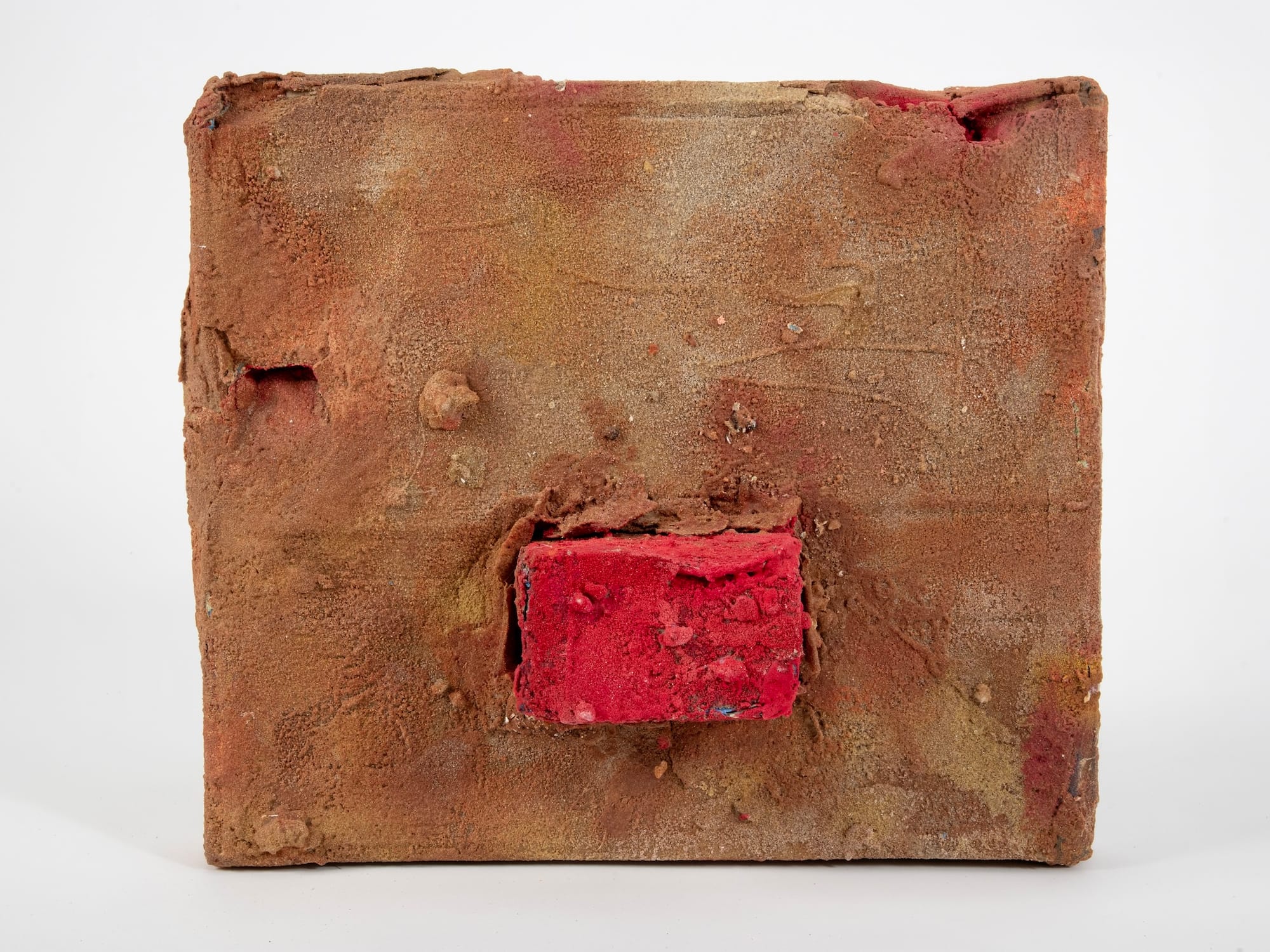
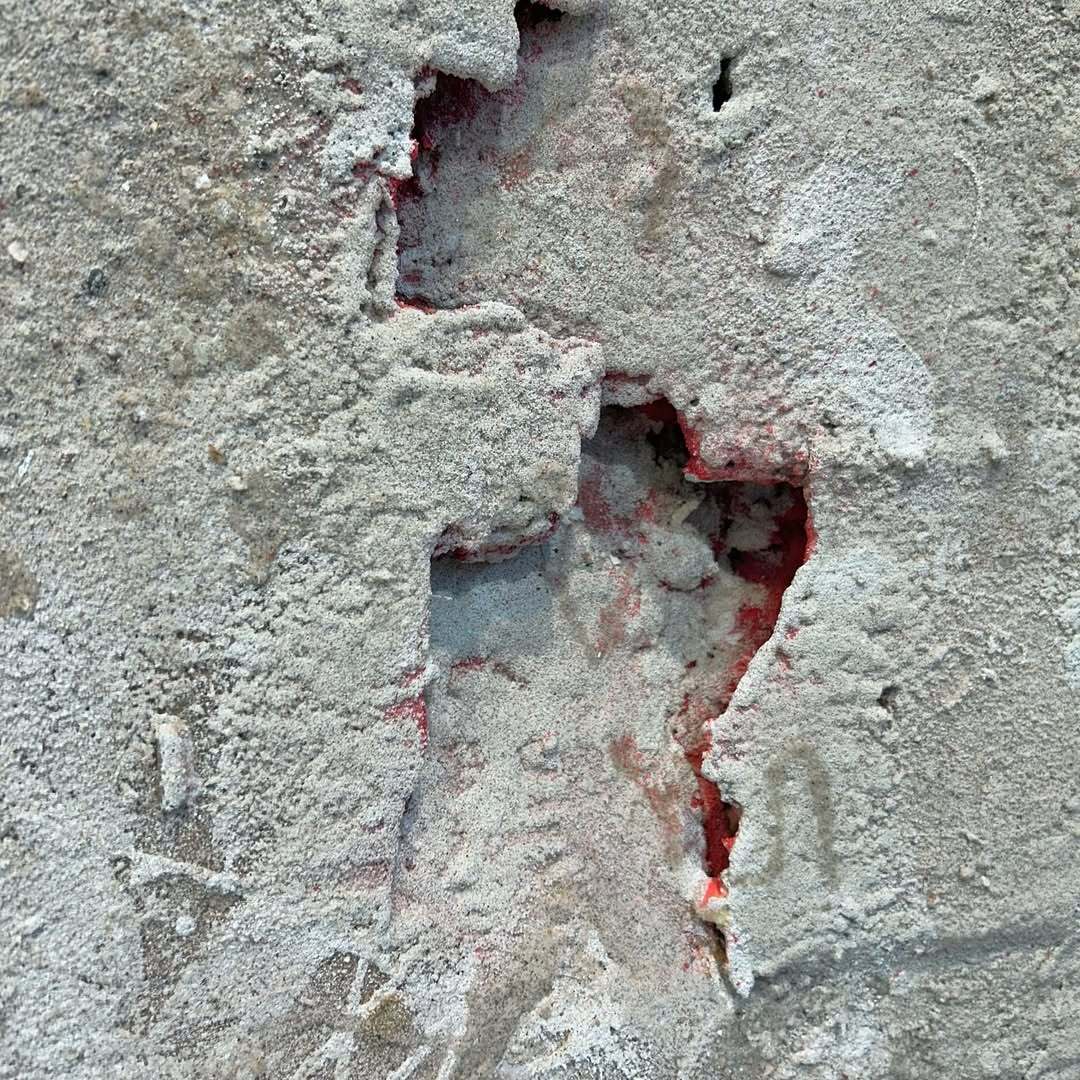
For me, as a child, it was playing in the sandbox or at the beach, or building with basic wooden blocks. You can do so much with so little.
Today, I want to keep that “beginner’s mind” attitude and let it permeate the work.
Yet, on another level, these simple materials can imply more metaphorically profound themes.
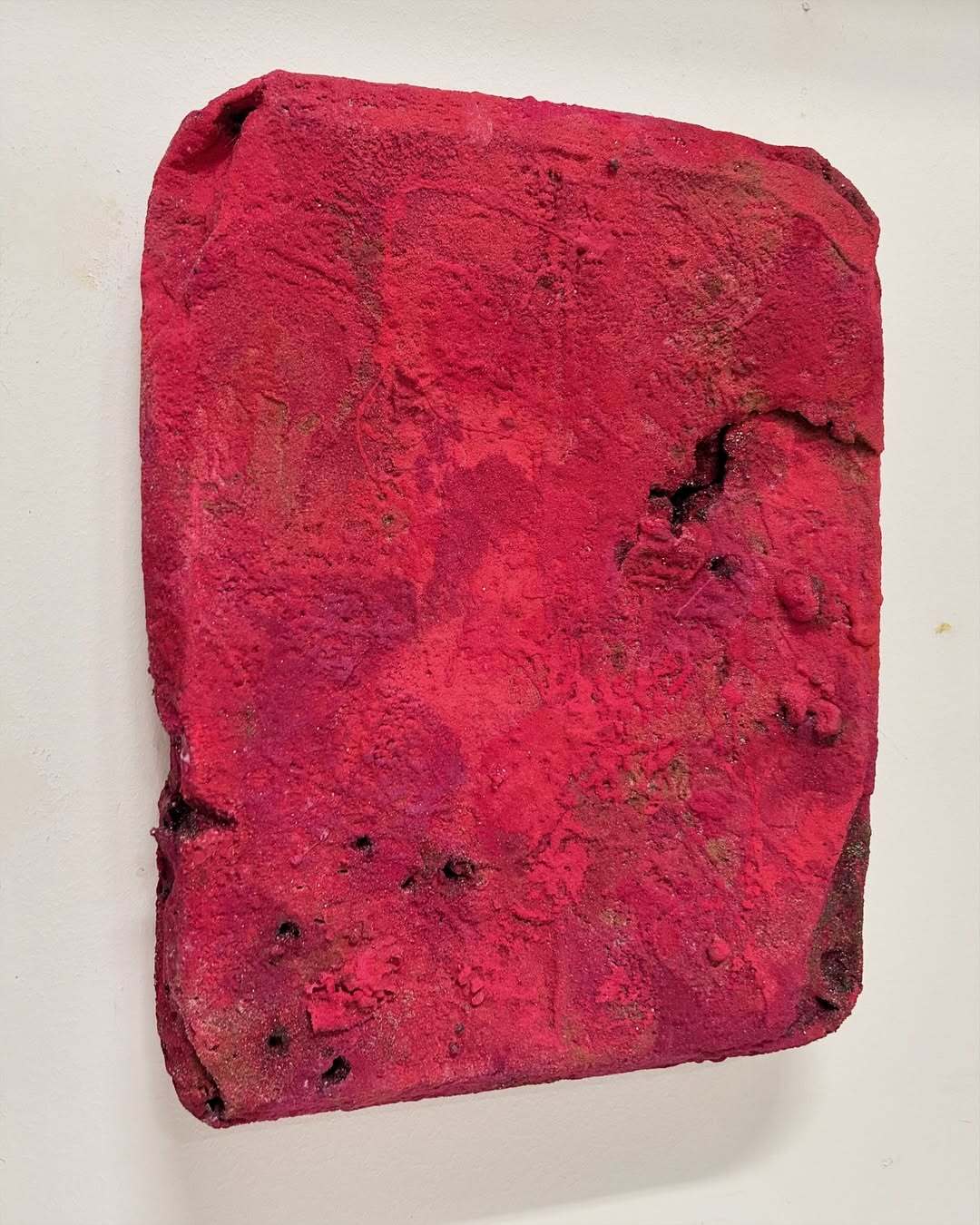
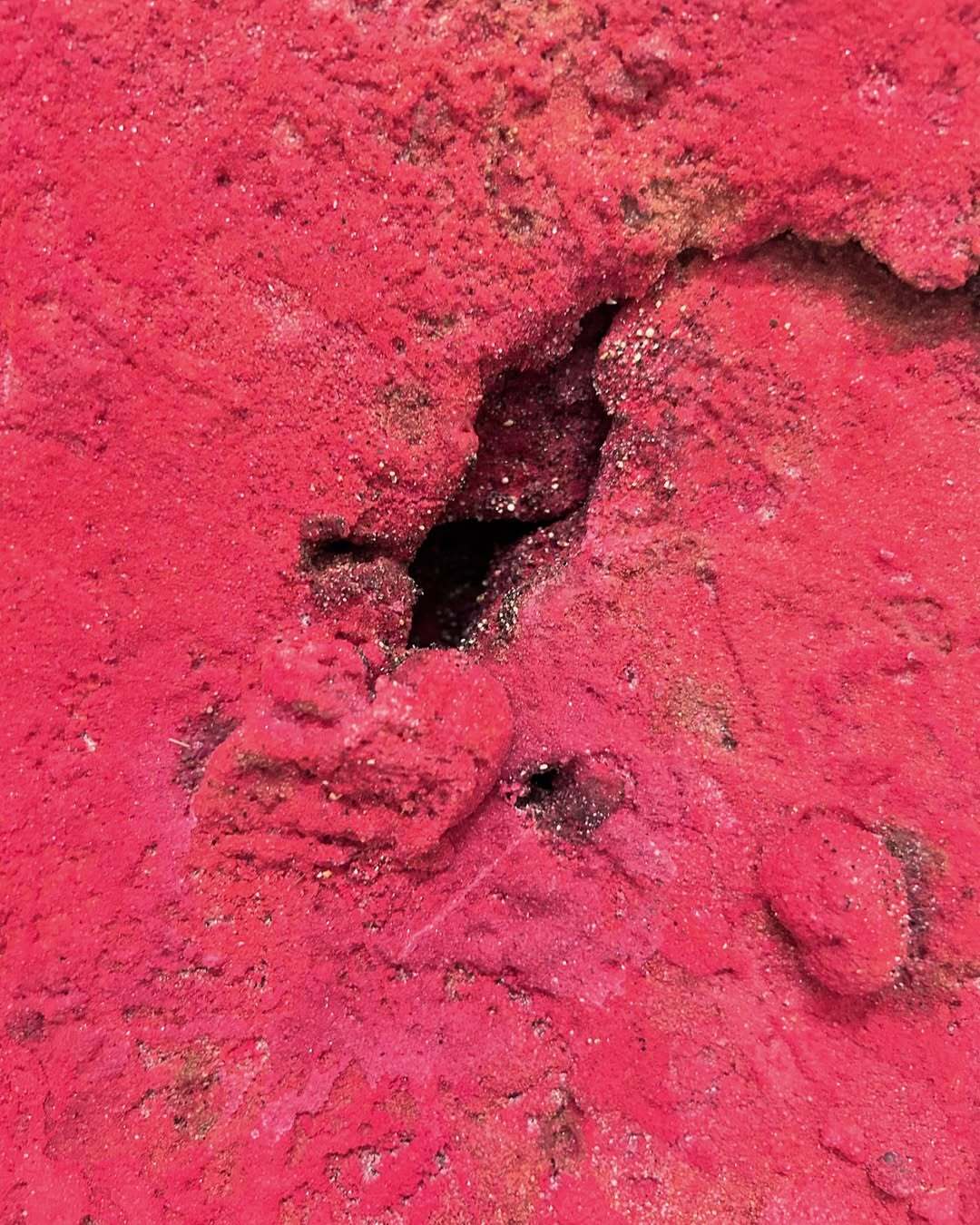
Mark Van Wagner, Red Rock Terrain, 2024 Natural and pigmented sand on recycled cardboard box, 19 × 15 × 2 in — wall sculpture Courtesy and permission of the artist
3. Many of your sculptures depict moments of impact and reverberation. How do you translate movement and energy into a static medium?
By slowly manipulating the boxes. I crush, twist and compress them.
If the sculpture is made up of multiples one can adjust the stacked pieces to reference movement by turning one of the building blocks.
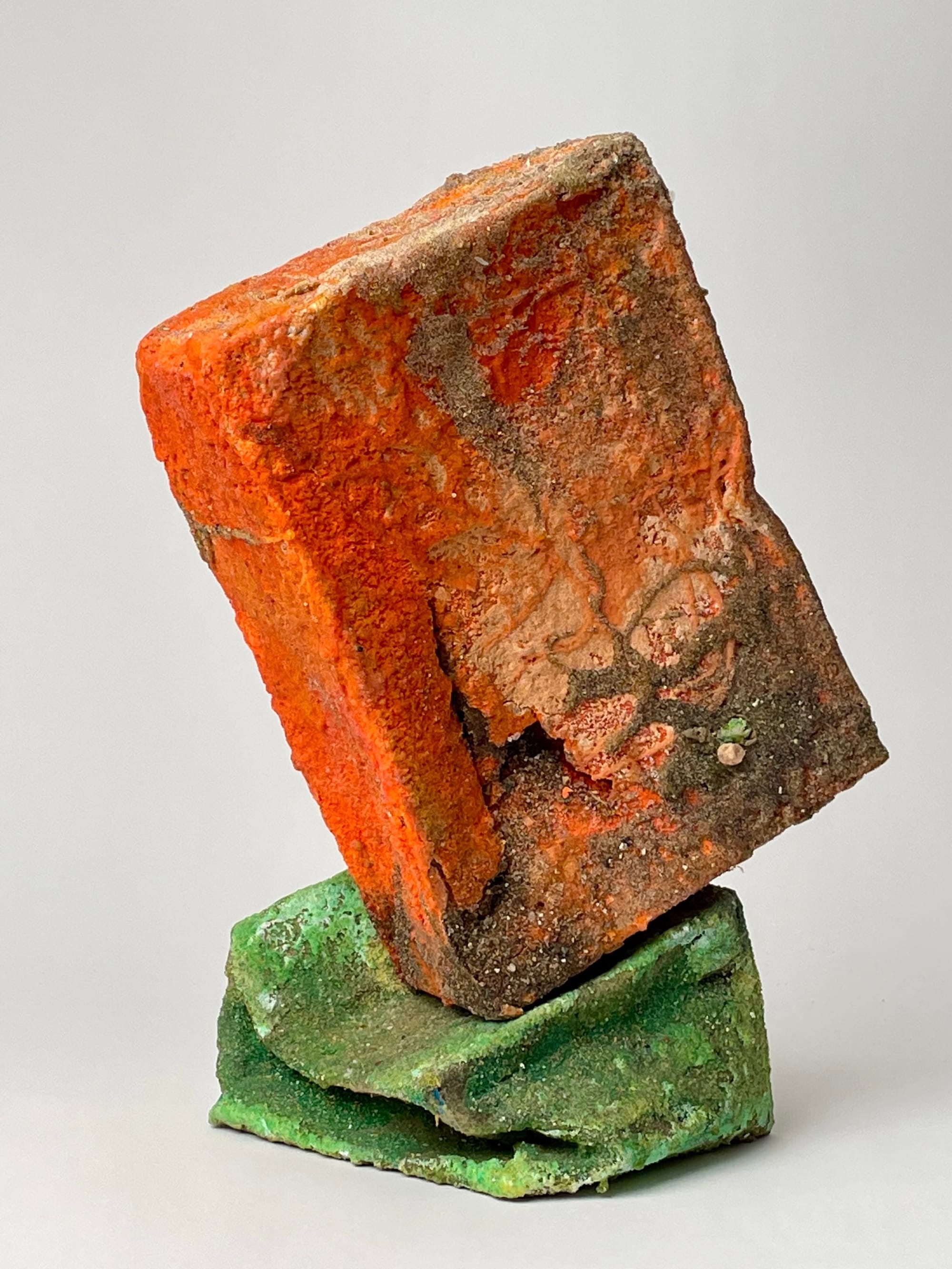
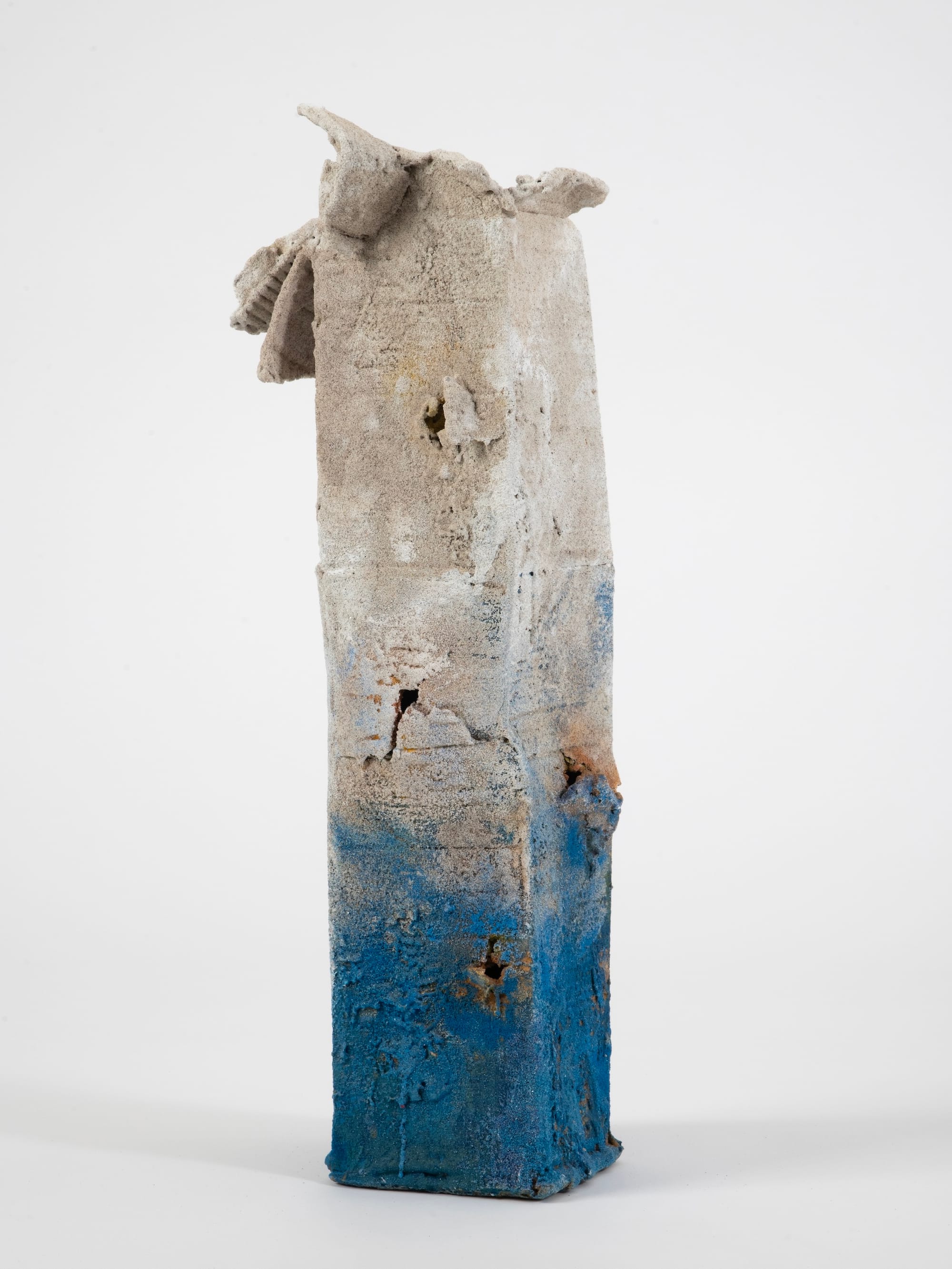
Mark Van Wagner, Green Reef Grief, (left) Natural and pigmented sand on cardboard box, 14 × 10 × 6 in -- Subtitle Zone, (right) Natural and pigmented sand on cardboard box 29x9x9 inches - Permission and courtesy of the artist
4. Impermanence seems to be a recurring theme in your work. How do you think your art captures or challenges the idea of things being temporary?
Well, with the material. If we examine a handful of sand, especially under a microscope, we see evidence of broken-down matter from man-made building materials, coral, bone, etc. Impermanence and erosion are inevitable in everything.
A tree was once a tree and then either fell and turned into dirt or was cut down and milled into paper, which became a cardboard box, which became a sculpture, which someday will return to being dirt.
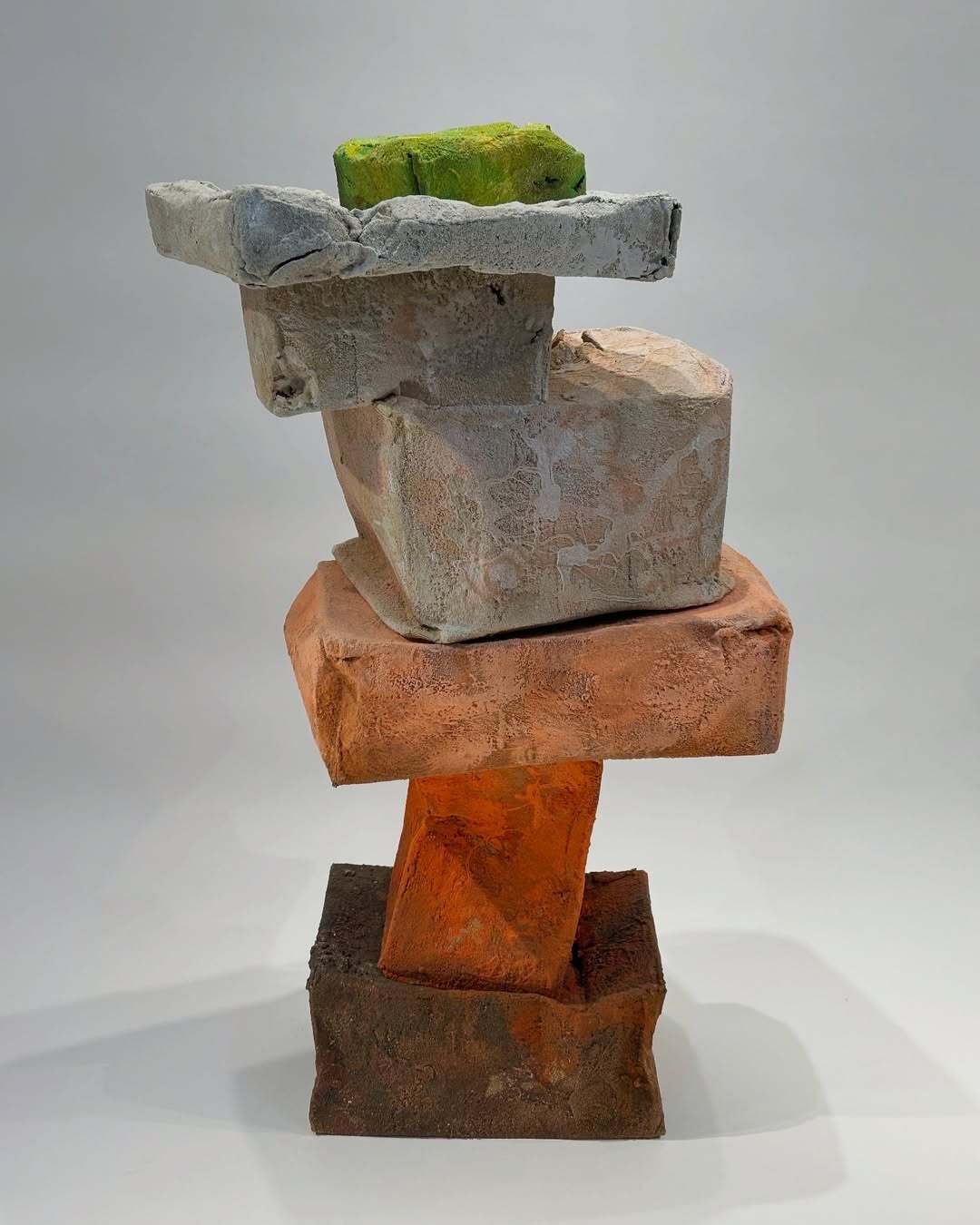

Mark Van Wagner, Plateau Story Courtesy and permission of the artist
Ecosystems are all about cause and effect and how everything is affecting everything else and is in constant flux. My work alludes to ruins and geology and the evidence of the ephemeral.
5. Beach debris is an integral part of some of your mixed-media pieces. How do you choose what materials to use, and what significance do they hold?
Just to be clear: I’m not trying to make any kind of heavy-handed environmental statement by using the flotsam/debris. It’s just what we unfortunately now have to accept as part of the makeup of our landscape.
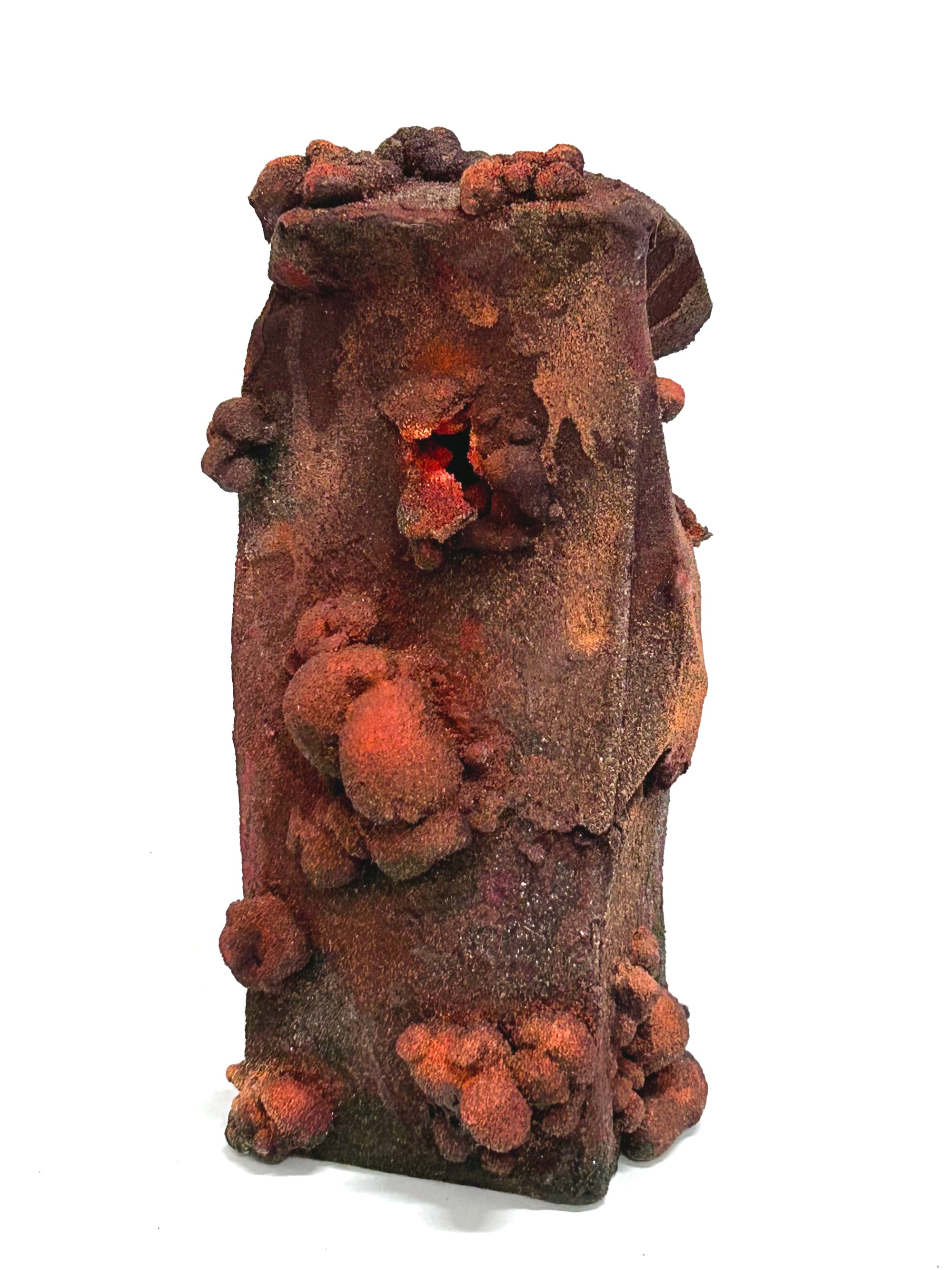
And weirdly, or more surprisingly, some of the colored plastic and glass that washes up onto some of the shores is quite beautiful after the ocean has done her job of trying to purify it.
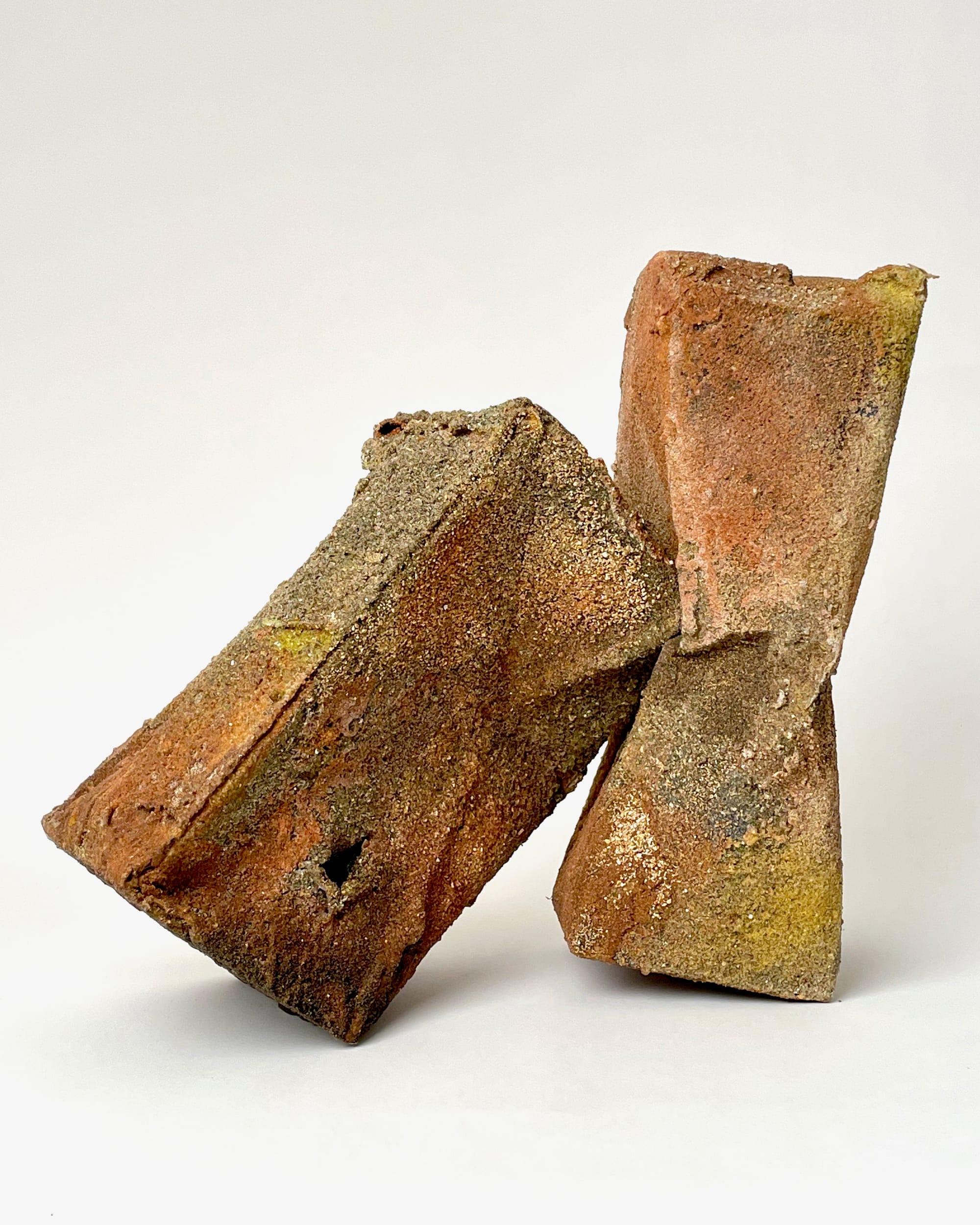
6. You studied Art History and Urban Planning—how have these disciplines influenced your creative approach?
Once you’ve studied Art History it’s hard not to reference the artists of the past. And why not? There are so many great ones!
As far as Urban Planning is concerned, I recently made an installation at an exhibit in Vienna where I grouped individual sculptures into clusters of 7, 9 and 11.
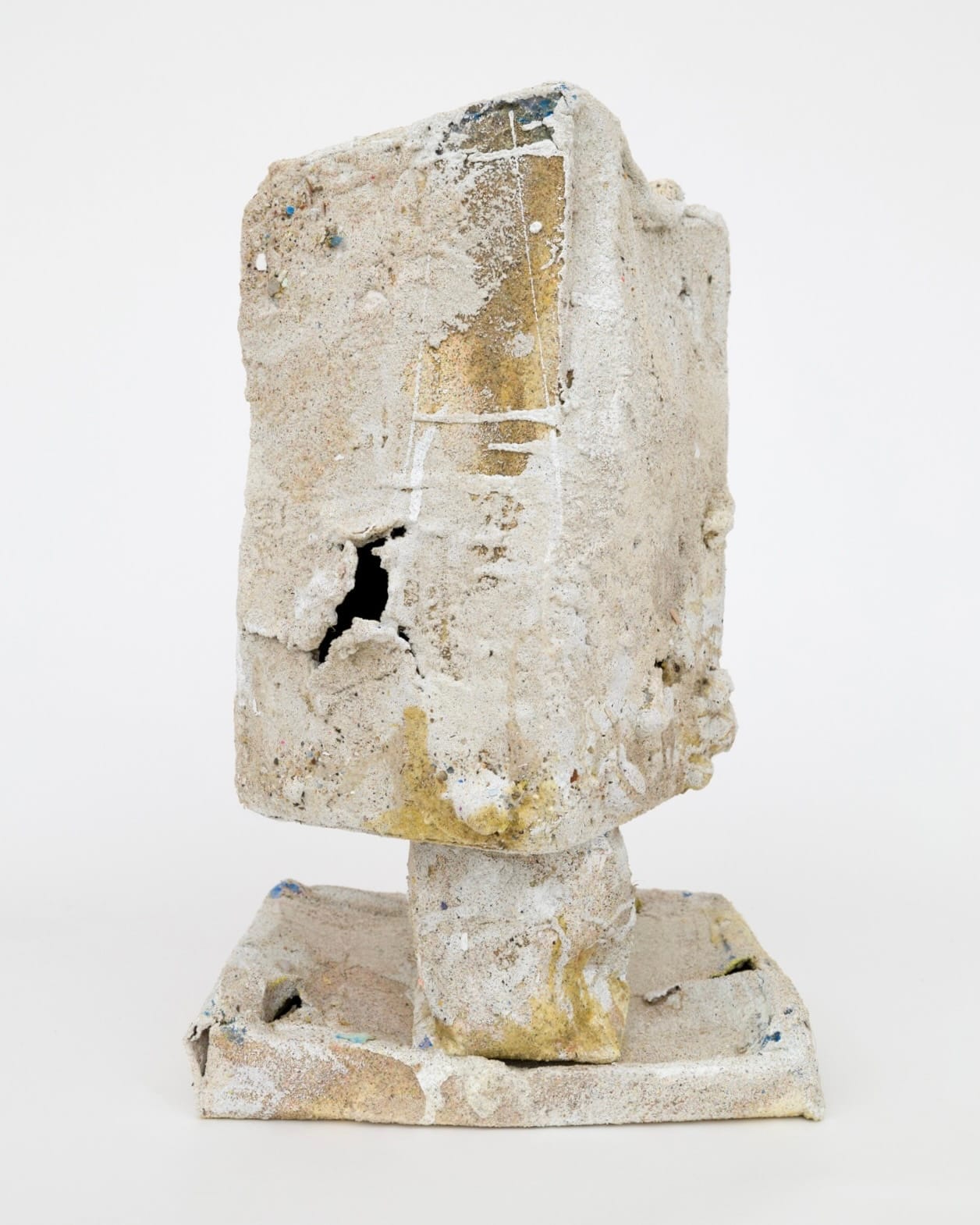
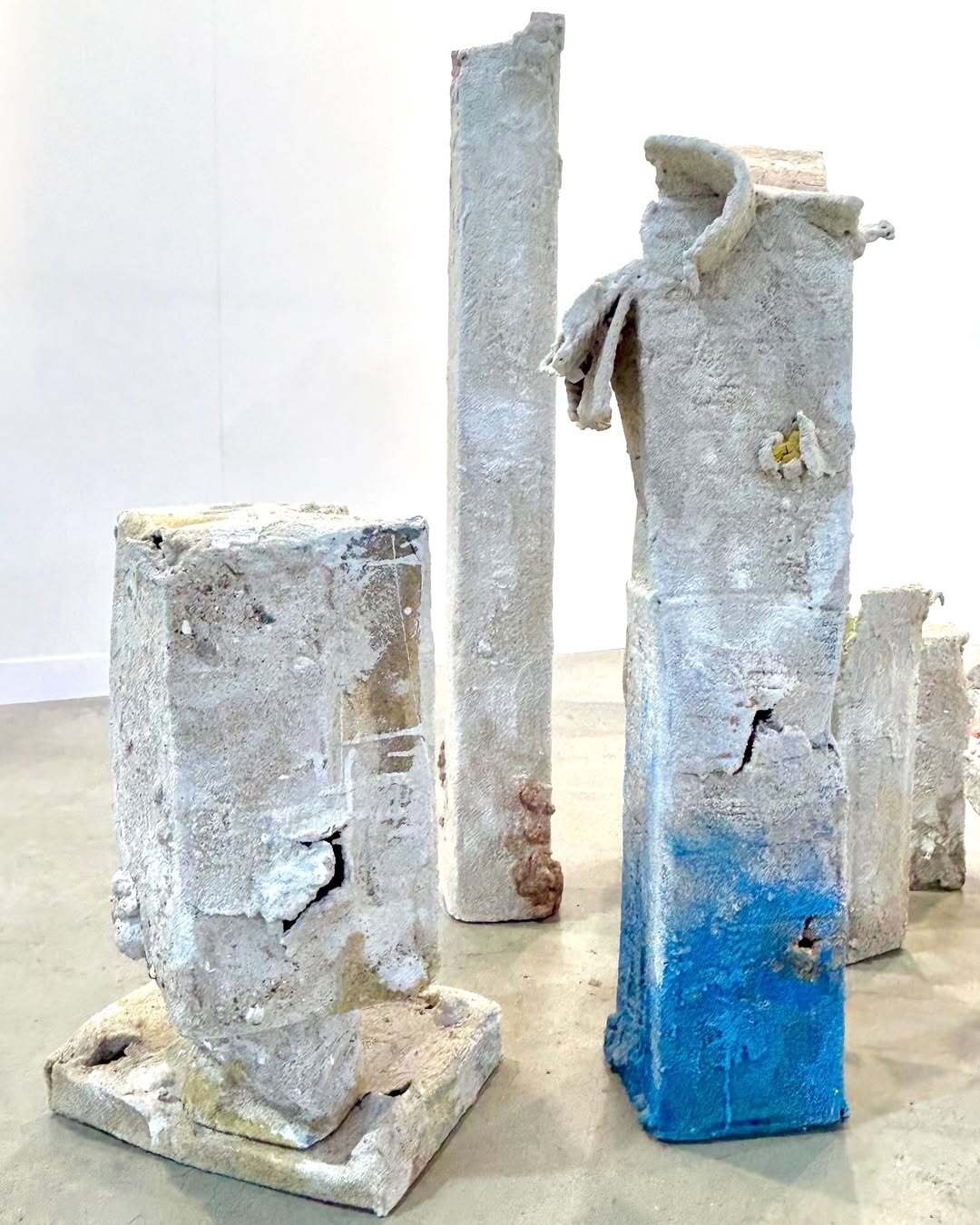
Mark Van Wagner, Rocky Plateau, 2024 19 × 12 × 10 in First image: the work hanging solo. Second image: installation view at Spark Art Fair Vienna 2025, MARQUEE PROJECTS. Courtesy and permission of the artist
The effect resembled city pods, villages, or underwater archeology. The installation suggested a narrative that perhaps referenced a prehistoric habitation or fictional ruins from the future.
7. Your work explores existential cycles of destruction and creation. Can you talk about how you view these cycles in both your art and the world around us?
There’s really not much to say about this other than that’s life – the sooner you accept it, the less crazy you’ll be.
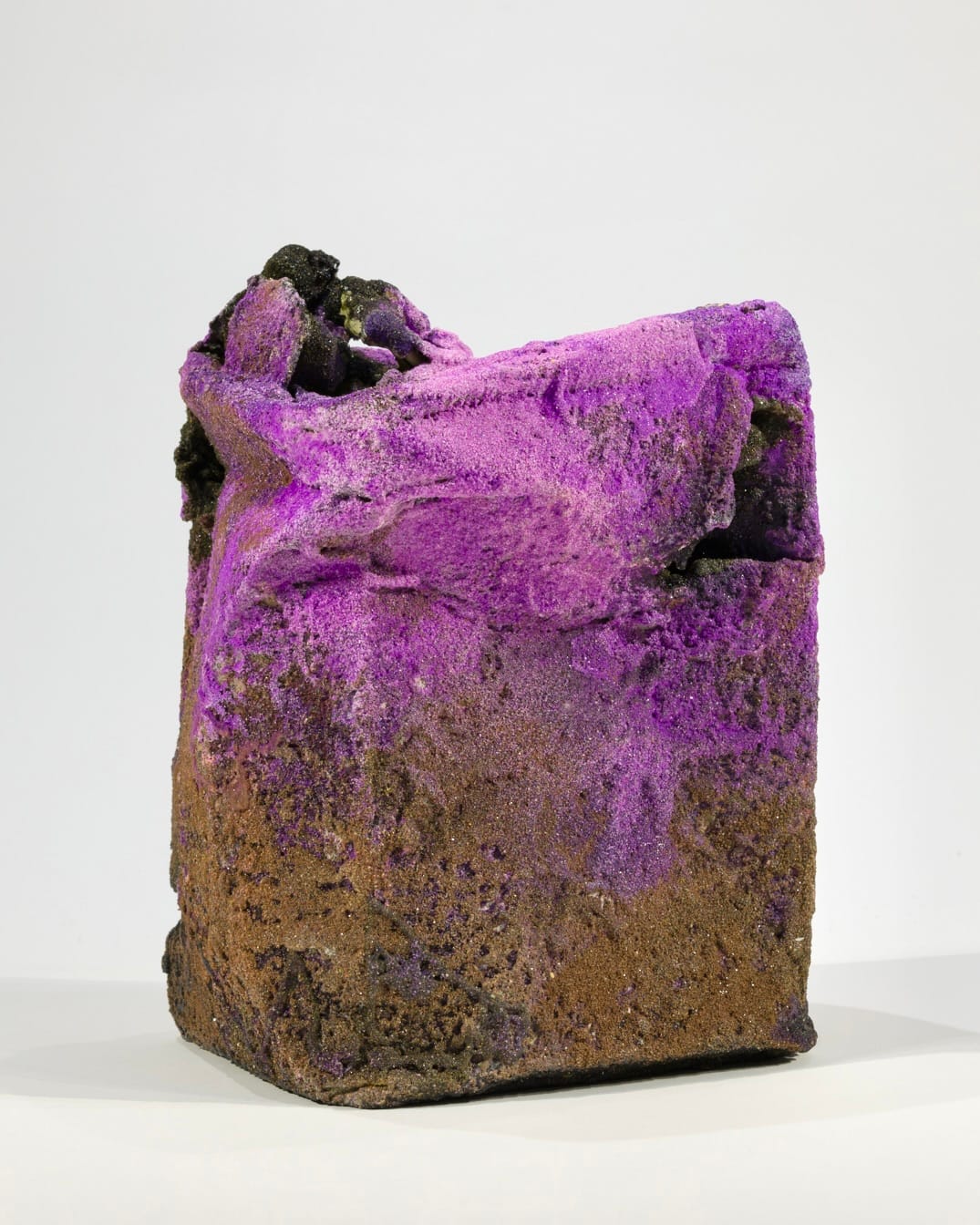
8. Which art movements or artists have influenced your style and technique the most?
My God there are so many. But I’ll start with the impressionists or you could even say the pointillists.
They were just starting to understand the physics and properties of light and express the dissolution of matter. I attended the School of the Art Institute of Chicago which was connected to the Museum.
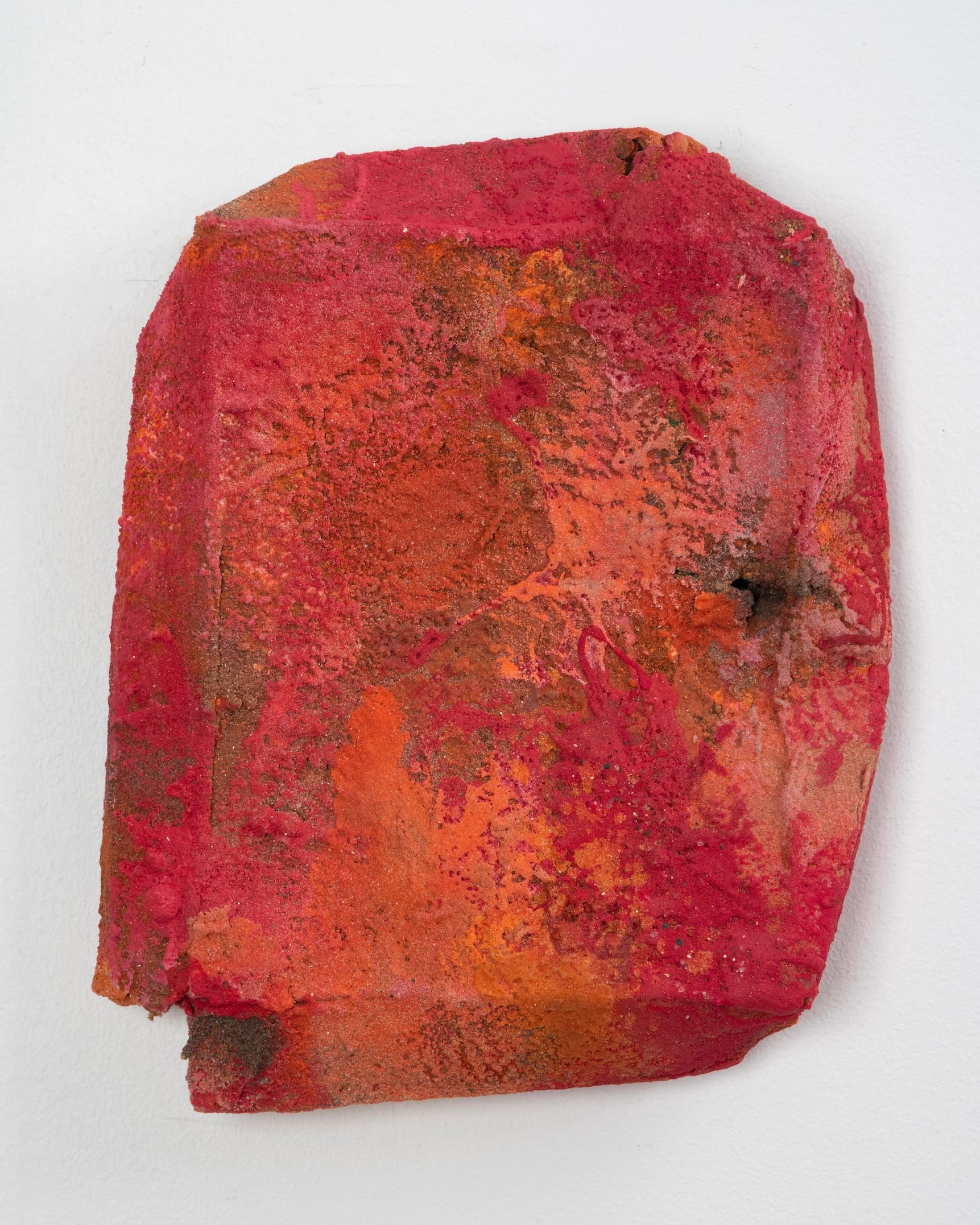
The Museum had in its collection Georges Seurat’s 1886 pointillist masterpiece, A Sunday Afternoon on the Island of La Grande Jatte.
Painting with points (pixels) is very conceptually related to using millions of sand particles to create one’s artwork.
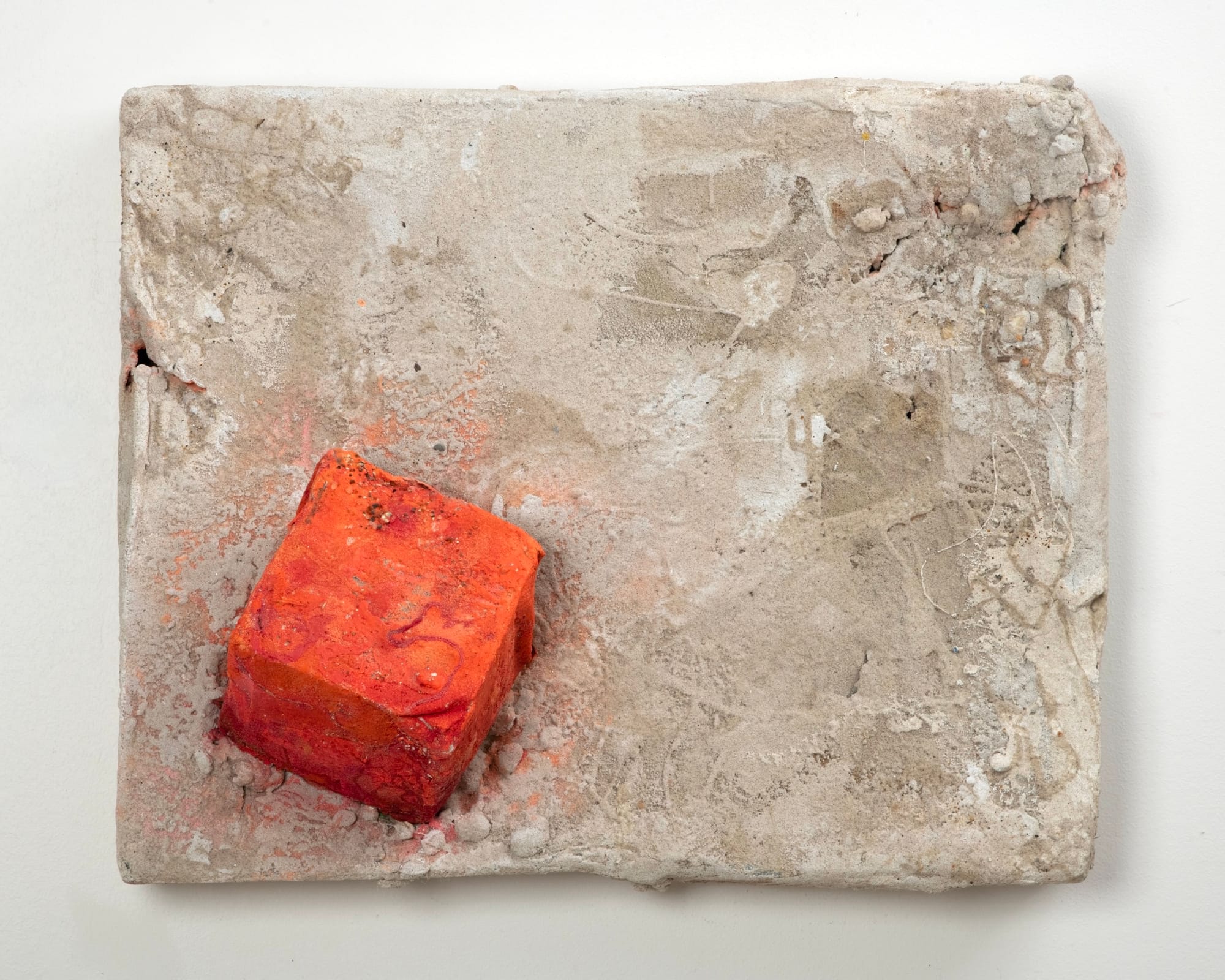
Other movements that are important to me would include Dada, Arte Povera, and the Abstract Expressionists. Cézanne, Duchamp, Tàpies, Rauschenberg, Chamberlain, Penone, Tuttle, Hesse.
9. How does your art reflect on the human impact on the environment?
As beautiful and smart as humans can be they inevitably will destroy their place in the world.
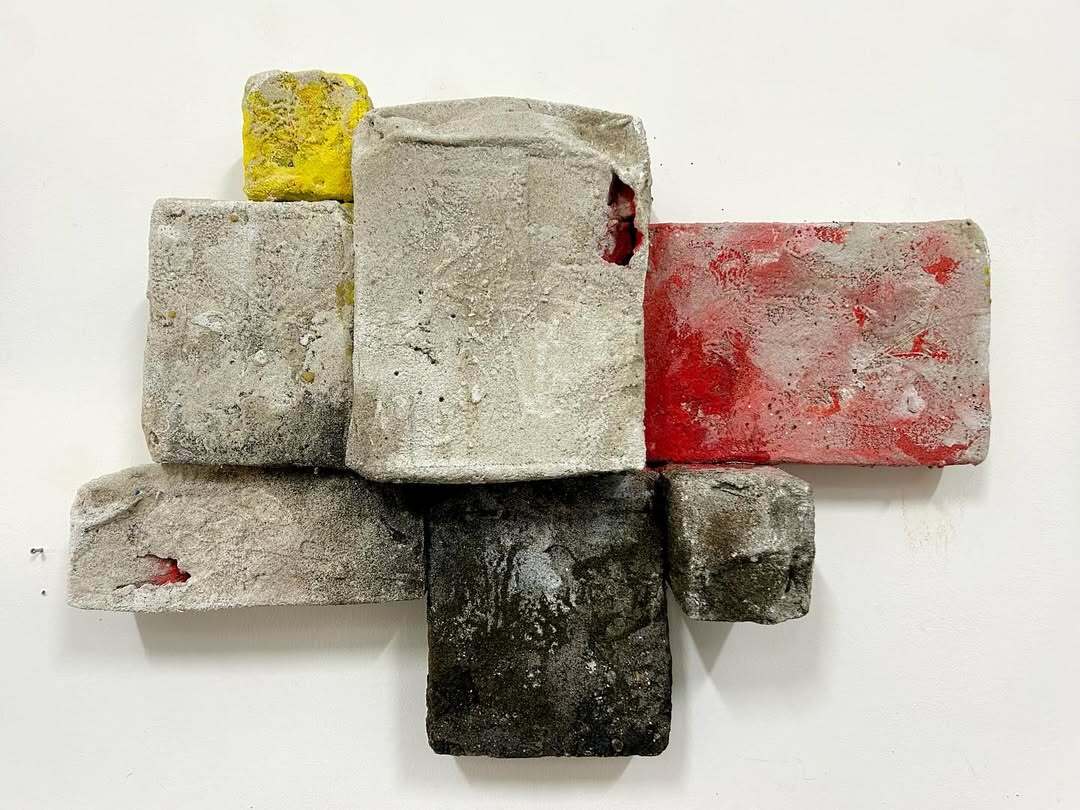
10. How do you see yourself evolving as an artist? Has your relationship with materials, themes, or creative process changed over time?
I think every artist wants to spend more and more time in the studio, pushing themself and their process.
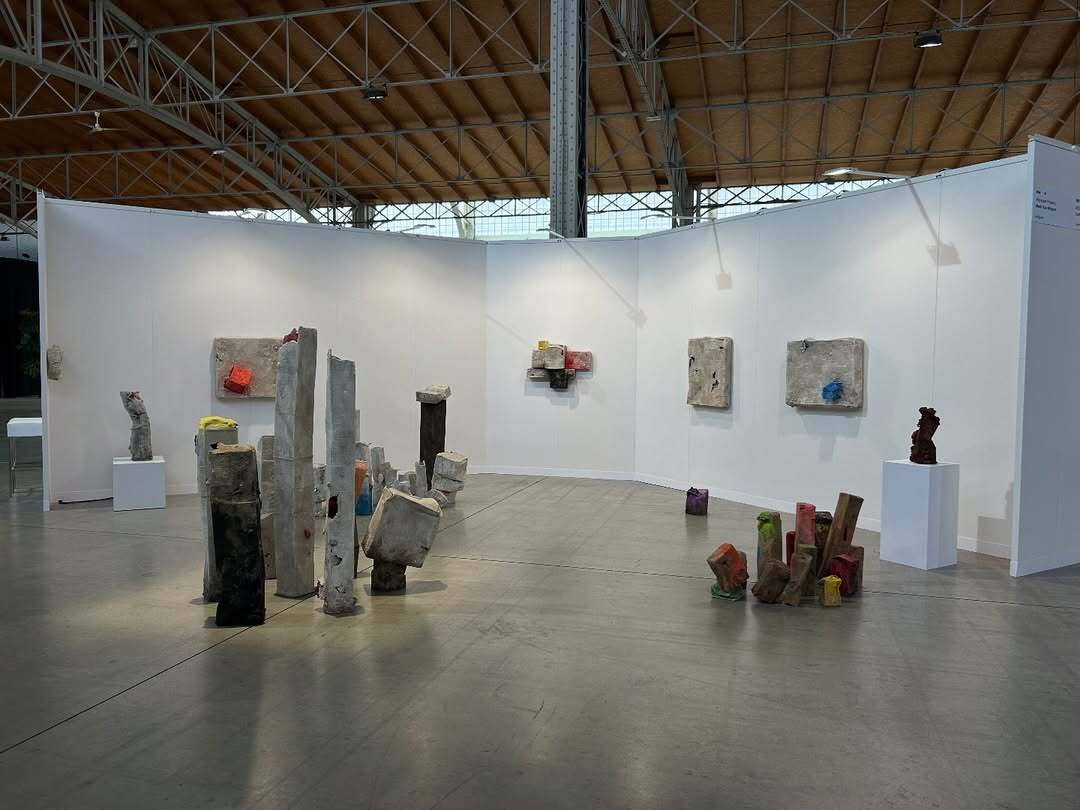
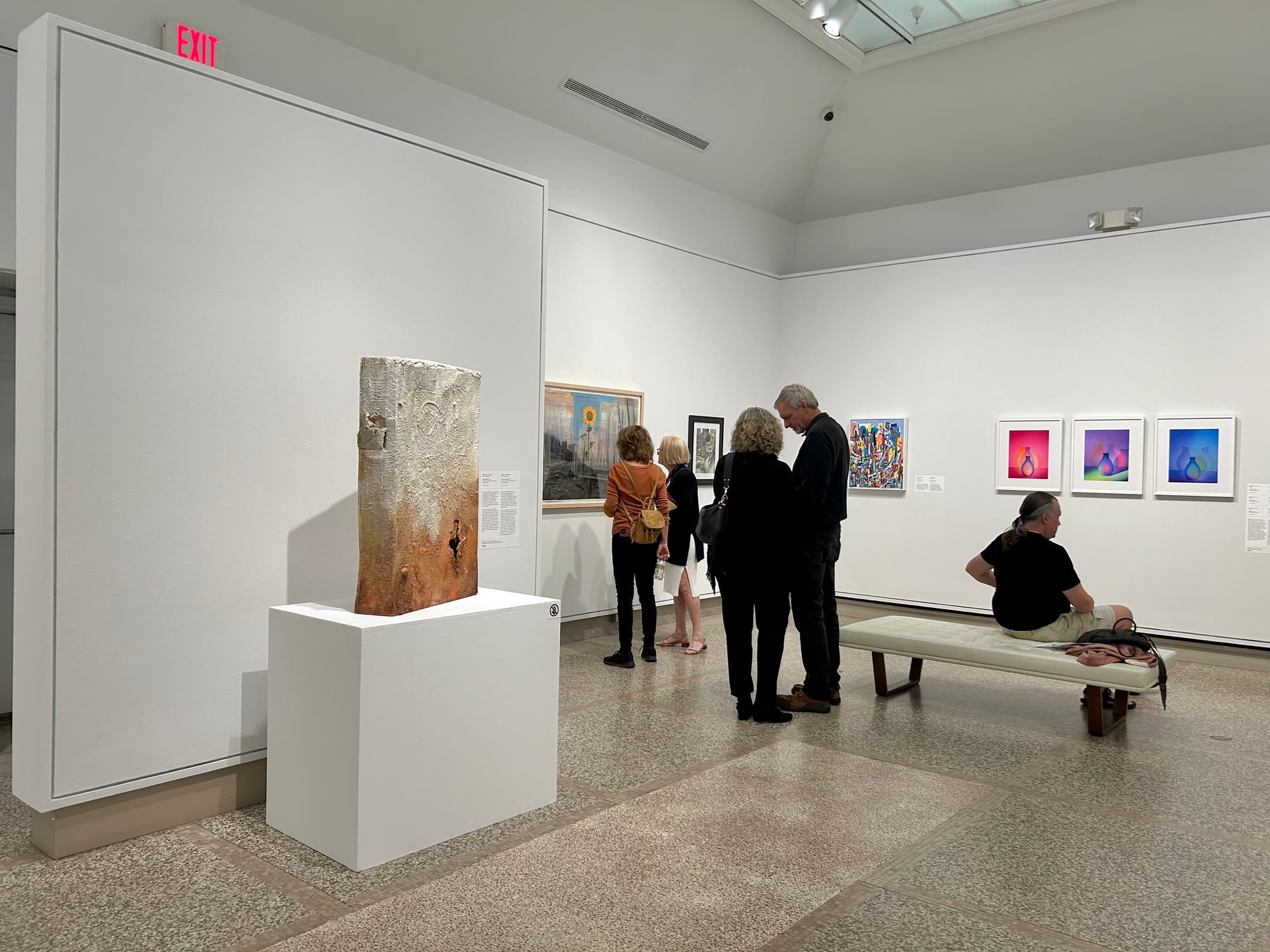
Over the years my relationship with materials and process has always seemed to have evolved and I’m sure this will continue.

Mark Van Wagner - Marquee Projects
Maybe one day I will complete works that can withstand the outdoors for respectable periods of time?
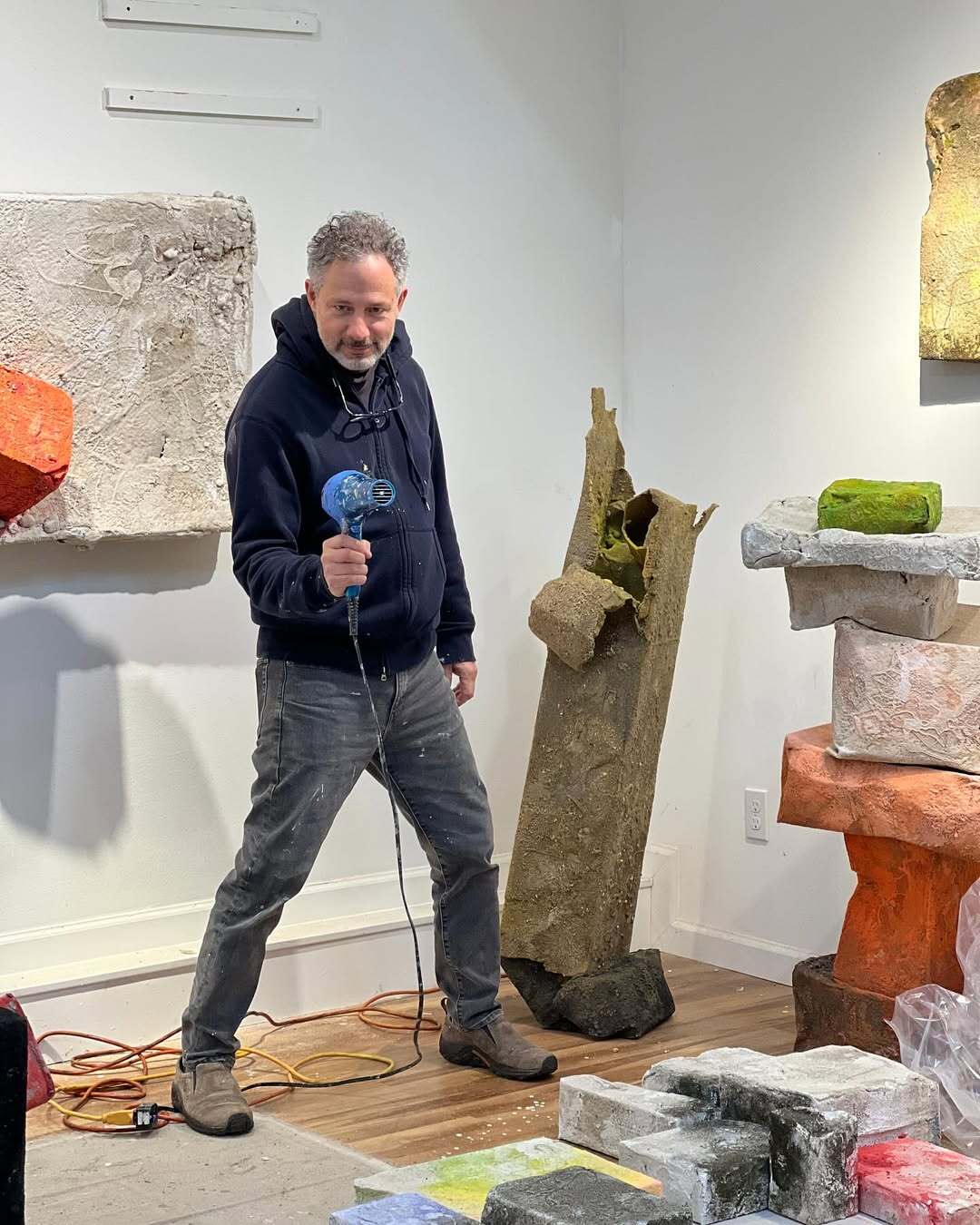
But, if I really examine the past in terms of my themes and ideas, they’ve been pretty consistent, and I imagine they will remain the same till I die.
11. What are your thoughts on the current state of art in the U.S.?
Anything is possible.
Special thanks to artist Mark Van Wagner and to DiFranco for the insightful conversation.
More about Mark Van Wagner :
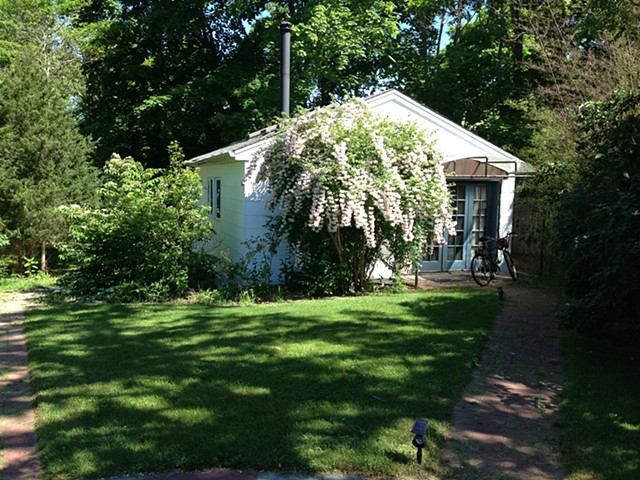
Mark Van Wagner - Online
Follow the Artist Mark Van Wagner on Instagram
Artist Feature – Mark Van Wagner
Based
Mark Van Wagner (Bellport, NY, USA)
Practice
Natural and pigmented sand, recycled cardboard, mixed media, adhesives.
Core Statement
“Impermanence and erosion are inevitable in everything.”
Context
Combines geological, architectural, and sociological observation through natural materials. Ephemeral, ecological, phenomenological approach emphasizing temporality and tactile decay.
Key Themes
Impermanence, Material Cycles, Geology, Transformation, Human–Nature.
Notable Works
- Ozymandias (2023)
- Cupola (2024)
- Red Rock Terrain (2024)
- Bane Terrain (2025)
Current Exhibition
Spark Art Fair Vienna (until May 2025)
Represented By
Marquee Projects, Bellport NY
Press
Artnet, Artsy, Artdaily, Chicago Tribune, NPR Radio, Hamptons Art Hub.
Links
markvanwagner.com · More Sculpture · New York Radar
Readers also interested in
- Andy Goldsworthy – ephemeral environmental works in sand and stone
- Vik Muniz – material-based compositions exploring impermanence
- Motoi Yamamoto – sand and salt installations about memory and cycles

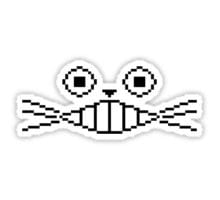
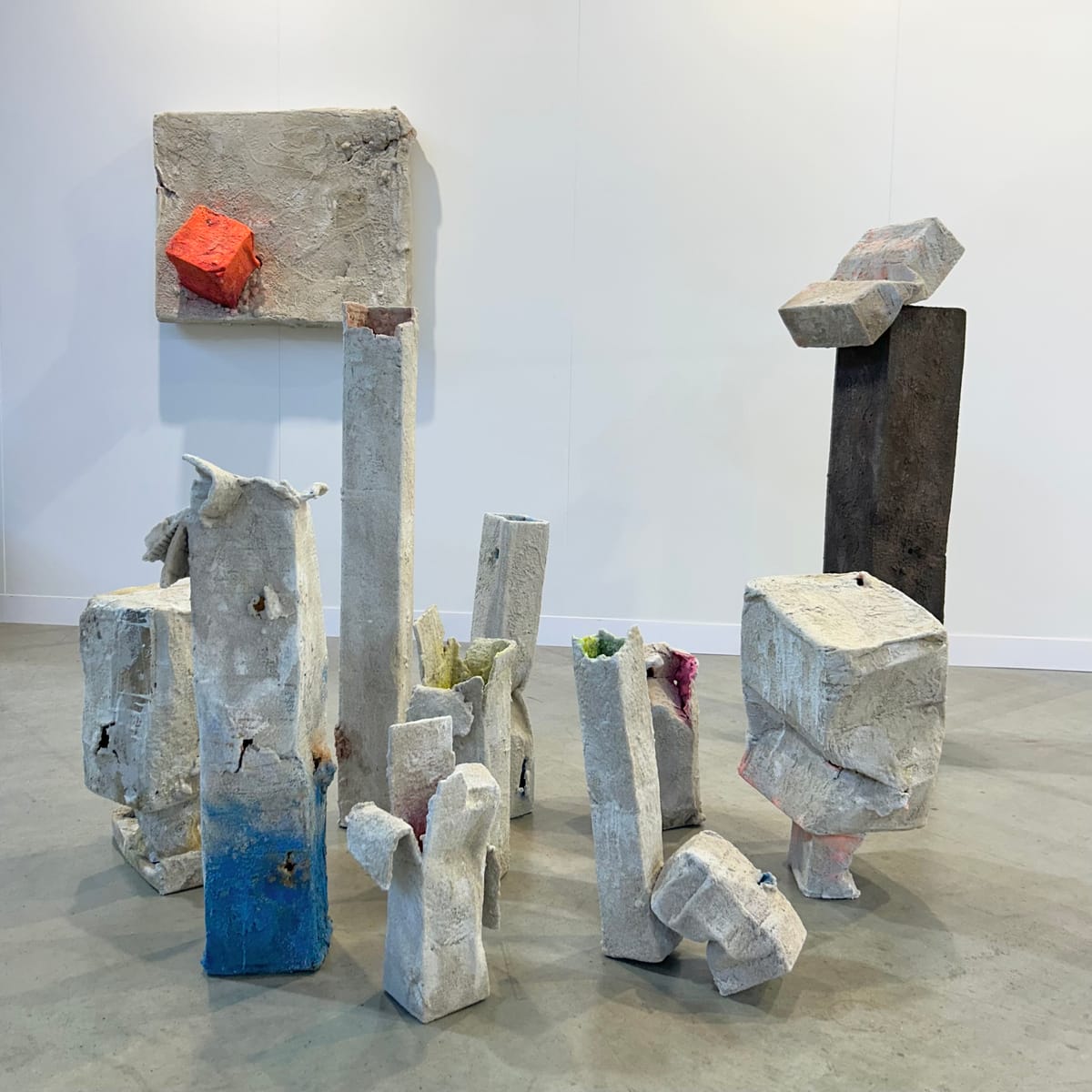


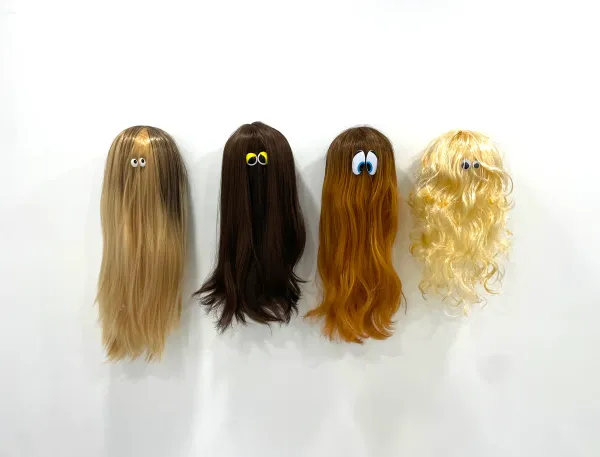
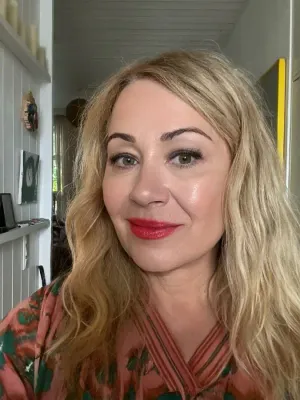
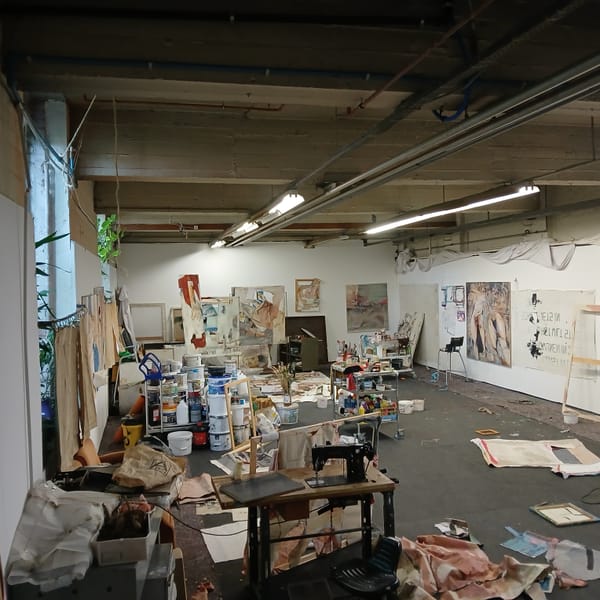
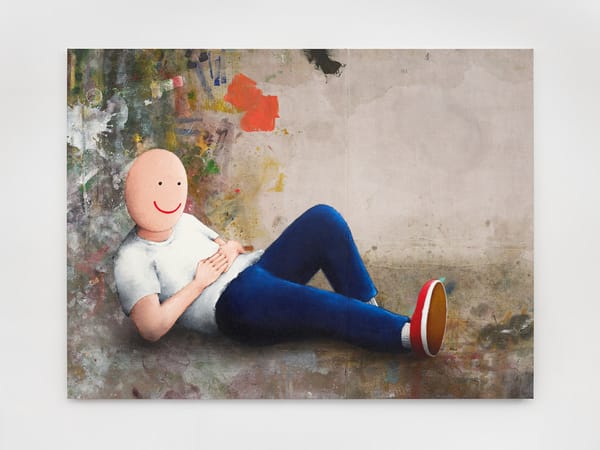
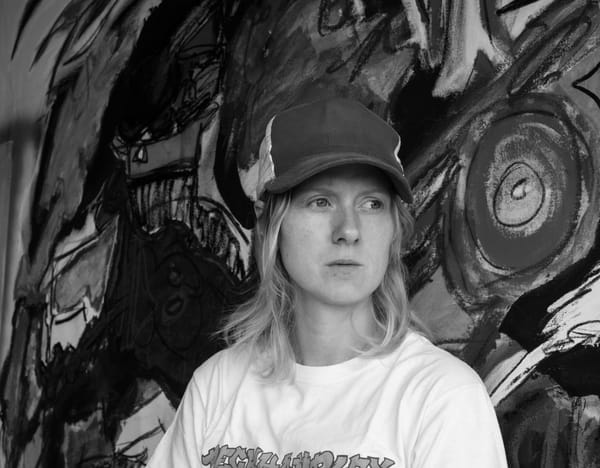
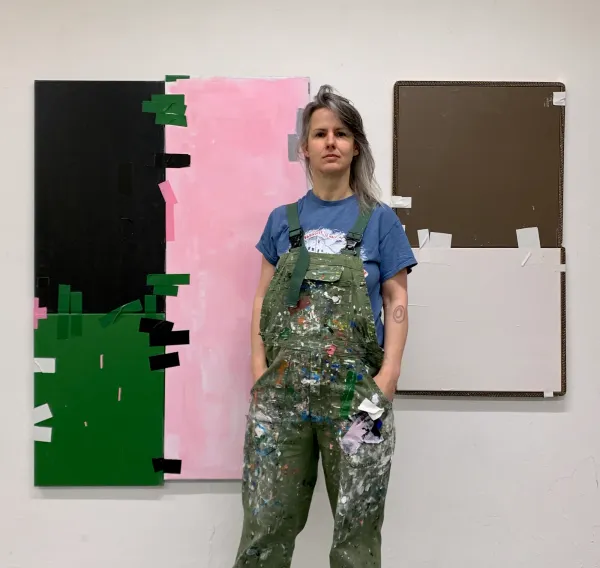
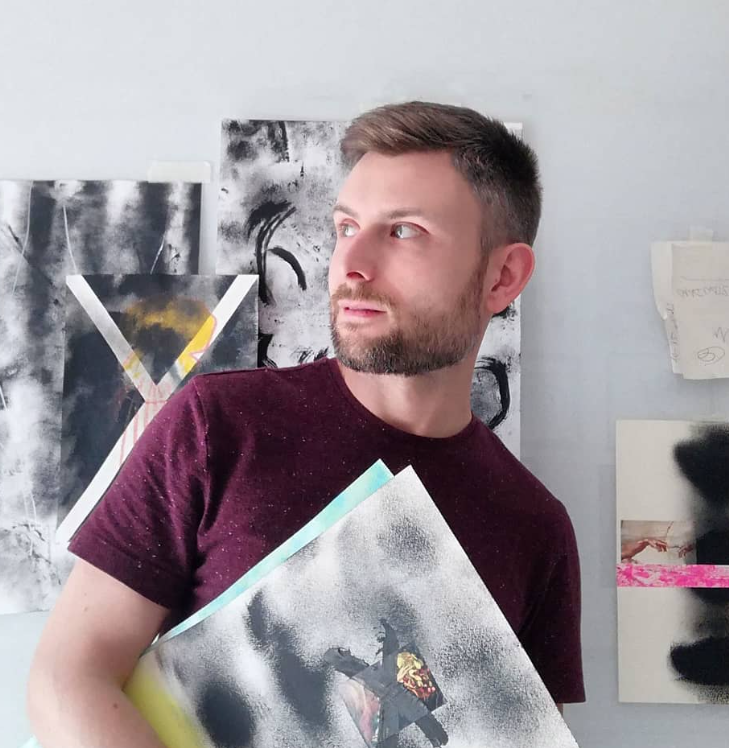
Member discussion